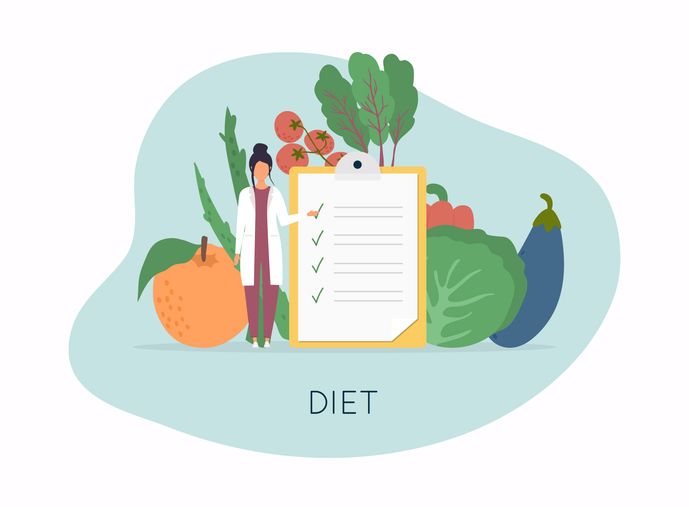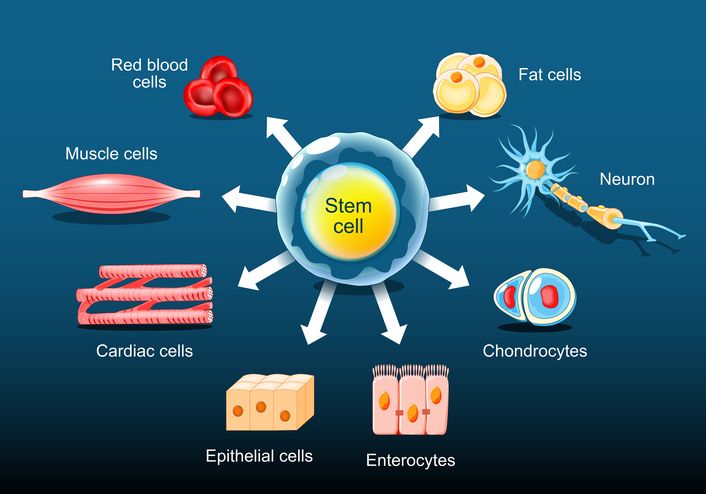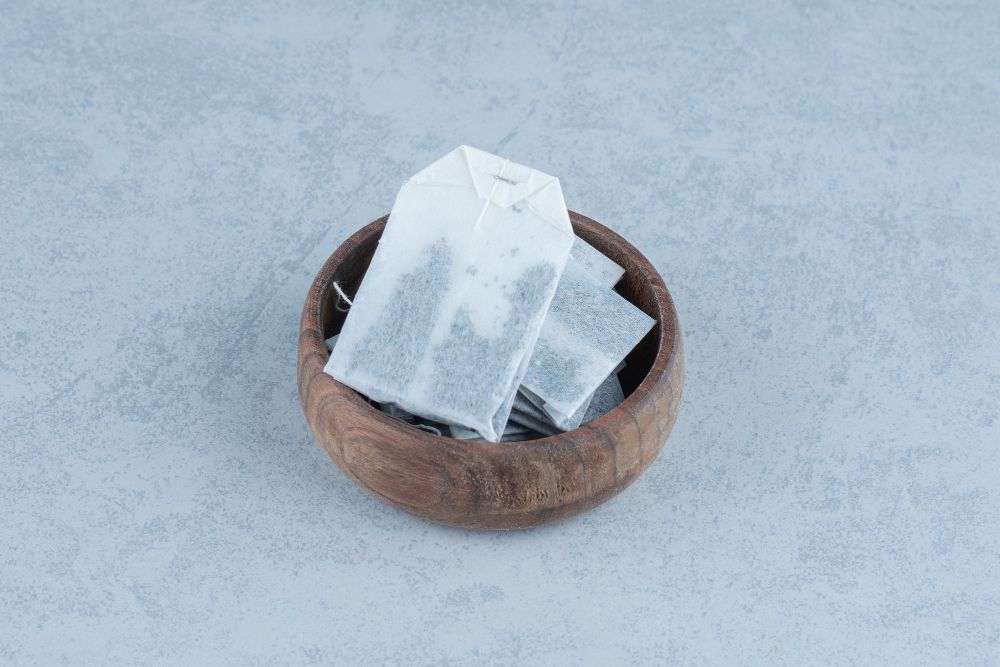
Author: Natalie Ng|Updated: 19 September 2025
Eating habits shape more than just how we look—they affect how we feel, how much energy we have, and how well our body functions over time. If your goal is to lose weight, switching to a low fat diet plan is one of the most practical ways to start. It helps you eat fewer calories, improve your fat consumption habits, and ease into a more balanced and sustainable eating pattern. This 7-day plan is built around simple, whole foods. You’ll focus on lean meats like turkey breast and fish, fiber-rich vegetables, and smart swaps like skimmed milk instead of cream. You’ll cut back on saturated and trans fats, keep visible fat off your plate, and rely more on unsaturated fat from foods like nuts, vegetable oil, and olive oil. That doesn’t mean cutting out all fat—just the types that raise your risk of heart disease and make it harder to keep your weight in check. By following a low fat diet, you can create a better balance between what you eat and how your body uses energy. It’s not about strict rules or cutting out entire food groups. It’s about small changes that help you eat in a way that supports a healthy lifestyle, without overthinking every meal. Keep reading to see how a well balanced diet over seven days can help reset your routine and make weight loss feel more natural.

How a Low Fat Diet Plan Supports Weight Loss

Focus on Calories Without Losing Balance
A low fat diet works best when you eat fewer calories without losing out on nutrition and overall health. Reducing fat intake lowers the calorie count, since fat contains more than double the calories per gram compared to carbohydrates or protein. But weight loss isn’t just about cutting fat. It’s about keeping your meals balanced and your body well-fueled.
Build Meals That Keep You Full
Filling your meals with the right foods helps manage hunger. Vegetables add volume without adding too many calories. Pasta, especially whole grain varieties, can also be a great low-fat option to keep you full and provide sustained energy. Lean meats like turkey breast, fish, and egg whites give you protein to support your muscles. Brown rice, lentils, and dried beans offer slow-burning energy that keeps you going.
Include These in Your Daily Diet
• Vegetables: Choose fresh or frozen without sauces or butter. They’re low in calories and high in vitamins.
• Lean proteins: Go for turkey breast, egg whites, or skinless chicken.
• Whole grains: Brown rice, oats, and quinoa give energy and fiber.
• Low-fat dairy: Pick skimmed milk or semi skimmed milk over cream or butter.
• Healthy fats: Use olive oil or vegetable oil instead of saturated and trans fats.
Reduce Fat Without Cutting It All Out
You don’t need to follow a zero-fat diet. Your body still needs different types of fat to absorb vitamins and support cell function. But too much saturated fats from fatty foods like cream, strong tasting cheese, egg yolks, and processed meat can raise your cholesterol and increase your risk of heart disease. Replacing these with polyunsaturated fats or unsaturated fat from nuts or fish is a better choice.
Read Food Labels to Track Fat Intake
Pay attention to fat content, saturated fat, and trans fats on food labels. Be cautious of processed foods like biscuits, which can contain unhealthy trans fats and contribute to higher calorie intake. Check portion sizes too. Small snacks can carry more fat than expected. Look out for added sugar, high-fat sauces, or processed foods that raise your calorie intake without adding value.
Keep reading to see how you can apply this approach through a full 7-day meal plan that’s easy to follow and helps you stay on track.

Essential Guidelines Before Starting Your Low Fat Diet Plan

Clear Out High-Fat Foods First
Start by making space for better choices. Go through your kitchen and remove high-fat items like butter, cream, lard, strong tasting cheese, processed meats, and snacks high in saturated and trans fats. These foods can increase your fat intake without adding real nutritional value. If they’re not in the house, you’re less likely to eat them.
Use this time to clean your fridge, pantry, and freezer. Take a close look at food labels, checking for fat content and hidden sources of trans fats or saturated fat. If a product contains hydrogenated oils or visible fat, it’s best to toss it out.
Measure Food with the Right Tools
Portion control is easier when you measure everything at first. Use a digital kitchen scale to weigh your food in grams or ounces. Measuring cups and spoons help you control ingredients like oil, dressings, and grains.
Learning what proper portions look like trains your eyes and makes future prep faster. Over time, you’ll be able to estimate accurately, but it’s important to start with precise tools while adjusting your fat and calorie intake.
Talk to Your Healthcare Provider
Before starting any new eating plan, check in with a healthcare professional. This helps confirm that a low fat diet is safe for your specific needs, especially if you have conditions related to heart disease, blood sugar, diabetes, or cholesterol.
A doctor or registered dietitian can also guide you on your daily calorie goals and any supplements you might need if your new eating pattern lowers certain nutrients.
Keep a Simple Food Journal
Tracking your meals gives you a clear view of your fat consumption, calories, and eating habits. Write down what you eat, when you eat, and how much. It doesn’t have to be perfect—just consistent.
You can use a notebook, app, or spreadsheet. The goal is to stay aware of patterns that support or slow down your progress. Note your hunger levels, energy, and sleep quality to help adjust your meals over time.
Take Body Measurements Before You Start
Weight is just one number. Track your progress more completely by measuring your waist, hips, thighs, and arms with a tape measure. Take clear, dated photos of your front, side, and back in simple lighting.
You’ll be able to notice changes in shape and fit, even if the scale doesn’t move right away. These extra markers give you more motivation to keep going.
Plan Your Grocery List Carefully
Head to the store with a clear plan. Write a list that includes fresh vegetables, fruits, lean meats like turkey breast and fish, skimmed milk, brown rice, lentils, and other staples from your low fat diet plan.
Stick to the outer edges of the store where the fresh foods live. Avoid aisles filled with fatty foods, sugary snacks, or processed ingredients high in saturated and trans fats. Think of your grocery list as a blueprint for your healthy lifestyle—each item plays a part in supporting better meals and fewer calories overall.
Book Now to Experience
S6 Body Sculpting Treatment
1 Minute Self-Registration
Date should not be before minimal date

Shopping List and Pantry Staples for a Low Fat Diet
Focus on Fresh, Lean Ingredients
To follow a low fat diet plan successfully, your shopping habits need to support your goals. That starts with choosing foods that are naturally low in fat but high in nutrition. Your cart should include lean meats like turkey breast, skinless chicken, poultry, and white fish. These options give you protein without raising your saturated fat intake.
Fill the rest of your cart with fiber-rich vegetables, dried beans, brown rice, and other whole grains. These foods help keep you full and reduce the need for fatty foods between meals.
Stock Up on Low Fat Dairy and Plant-Based Alternatives
Dairy can add a lot of fat if you’re not careful. Opt for lower-fat cheeses or smaller portions of stronger cheeses to keep your fat intake in check. Switch out full-fat milk and cream for skimmed milk, semi skimmed milk, or fat-free yogurt. If you prefer plant-based options, look for unsweetened almond, oat, or soy milk without added sugar.
Strong tasting cheese and cream-based sauces are high in saturated fat. Limit these or replace them with lighter versions to reduce your overall fat consumption.
Add Low-Fat Cooking Staples to Your Pantry
Your pantry is your support system. Keep it filled with items that make it easy to prepare low fat meals quickly.
Smart Pantry Staples
• Canned vegetables and beans (no added salt): Quick sources of fiber and protein
• Brown rice and quinoa: Great for energy and digestion
• Herbs and spices: Add flavor without adding calories or fat
• Vegetable oil or olive oil (used sparingly): Better choices than butter or cream
• Low-sodium broths: Ideal base for soups and stews
Cooking spray is a helpful tool too. It lets you sauté or roast without using butter, high-fat oils, or making higher-fat foods like roast potatoes.
Organize Your Kitchen for Daily Success
Having the right ingredients isn’t enough—you need to see them and reach them easily. Keep your produce at eye level in the fridge. Store grains and legumes in clear containers. Group your herbs and seasonings where you’ll see them when cooking.
This setup helps you stay consistent. You’re more likely to cook a healthy meal when the ingredients are already within reach.

Fresh Produce Checklist for a Low Fat Diet
Choose Vegetables That Add Volume Without Fat
Vegetables are essential in any low fat diet plan. They’re high in fiber, low in calories, and help you eat fewer calories overall by filling up your plate without adding fat content. Prioritize variety and color to get a wide range of nutrients.
Leafy greens like spinach, kale, and romaine lettuce are ideal for salads, wraps, and smoothies. They're low in fat and calories but rich in vitamins like A, C, and K. Cruciferous vegetables—broccoli, cauliflower, cabbage—are also good picks because they’re satisfying and nutrient-dense without the fat.
Bell peppers, cucumbers, and cherry tomatoes are easy to prep and perfect for snacking or meal add-ons. Keep them washed and chopped in the fridge so you can grab them quickly.
Include Fruits for Natural Sweetness
Fruits help reduce sugar cravings and support your healthy lifestyle. Avoid high-fat alternatives like chocolate, which can add unnecessary calories and fat to your diet. Focus on low-fat, high-fiber options like apples, berries, pears, and citrus fruits. They deliver natural sweetness along with vitamins and antioxidants.
Berries, in particular, are rich in fiber and help balance blood sugar, making them a great choice for snacks or breakfast toppings. Dried fruit can be included occasionally, but check food labels for added sugar and monitor portion sizes to avoid extra calories.
Don’t Forget Root Vegetables
Root vegetables like sweet potatoes, carrots, and onions bring flavor and variety to your meals. Sweet potatoes, in particular, are high in fiber and vitamins while remaining low in fat. Roast them with a small amount of olive oil or vegetable oil, and pair them with lean meats for a satisfying dish.
Carrots are great raw or cooked, and they hold up well in stews or as sides. Onions add depth to meals without extra fat, especially when sautéed with a light spray of oil.
Use Fresh Herbs for Flavor
Herbs boost the taste of your meals without raising fat content or calories. Basil, parsley, coriander, and chives are easy to use and can transform simple dishes. Keep a few fresh herbs on hand each week, and rotate based on your favorite flavors.
Whether you're making soup, stir-fry, or a salad, herbs can help you enjoy your meals without turning to butter, cream, or strong tasting cheese for added taste.

Healthy Pantry Must-Haves for a Low Fat Diet Plan
Build a Pantry That Supports Low Fat Cooking
A well-organized pantry makes it easier to stick to a low fat diet. When your shelves are stocked with the right foods, healthy meals come together faster, and you’re less likely to reach for fatty foods or snacks.
Your goal is to fill your kitchen with ingredients that are naturally low in saturated fat and support a balanced eating pattern. Choose shelf-stable items that are nutrient-dense and help reduce your total fat intake.
Choose Whole Grains for Long-Lasting Energy
Whole grains are a key part of a diet low in fat. For example, one serving of brown rice is about half a cup cooked. They keep you full, help control your appetite, and provide energy throughout the day.
Best Pantry Grain Options
• Brown rice
• Quinoa
• Whole oats
• Whole grain bread or crispbreads (check food labels for fat content)
These grains are high in fiber and work well in any meal—breakfast, lunch, or dinner.
Add Legumes for Plant-Based Protein
Legumes like lentils and chickpeas are filling and packed with nutrients. They offer protein and fiber without the fat found in some animal products. Keep canned or dried versions in your pantry for easy meal prep.
Use them in soups, salads, or stir-fries. They pair well with vegetables and grains, and help reduce the need for fatty meats in your meals.
Keep Seasonings That Don’t Add Fat
Flavor is important, especially when cutting back on fat. Herbs and spices let you season meals without adding calories or saturated fat.
Choose a mix of dried herbs, ground spices, and seasoning blends without added sugar or sodium. Garlic powder, cumin, chili flakes, curry powder, and black pepper are all versatile and useful.
Stock Helpful Canned Goods
Canned foods are convenient, but you’ll need to choose carefully. Go for low-sodium and no-oil versions when possible. Always check food labels for added oils, fat content, and salt.
Useful Canned Staples
• Chopped tomatoes
• Canned beans (rinsed before use)
• Low-sodium vegetable broth
• Corn or peas (packed in water)
These are ideal for quick soups, stews, and low fat meals that don’t rely on butter or cream.
Book Now to Experience
S6 Body Sculpting Treatment
1 Minute Self-Registration
Date should not be before minimal date

Day 1 & 2: Gentle Transition into a Low Fat Diet
Start with Familiar, Light Meals
The first two days are about easing into your new eating pattern without feeling restricted. Start your mornings with simple, comforting foods like oatmeal, egg whites, or low fat Greek yogurt. These meals are low in saturated fat and help you adjust without making major changes all at once.
For lunch and dinner, focus on lean proteins and plenty of vegetables. Keep protein portions between 4–6 ounces and aim for at least 2 cups of vegetables per meal. Pair these with whole grains like brown rice or quinoa for balanced, filling meals.
Keep Evening Meals Light and Simple
Evening meals should support digestion and help you sleep well. Stick to lighter options such as broth-based soups, baked fish, or salads with grilled chicken. These meals lower your overall fat intake and prepare your body for deeper changes ahead.
Sample Low Fat Dinner Ideas
• 4 oz grilled chicken breast with steamed broccoli and roasted potatoes (lightly brushed with vegetable oil)
• 5 oz baked white fish with a side of brown rice and green beans
• Mixed green salad with 3 oz grilled turkey breast, cucumber, tomatoes, and a light vinaigrette
• Vegetable soup with 1 cup shredded chicken and a slice of whole grain toast
These combinations keep fat content low while giving your body the nutrients it needs, helping you to lose weight effectively.

Easy Morning Recipes for a Low Fat Diet
Keep Breakfast Simple and Satisfying
Starting your day with a low fat breakfast helps set the tone for the rest of your meals. Choose foods that provide energy, fiber, and a small amount of protein without adding saturated or trans fats. Avoid using butter or cream, and skip fatty breakfast meats like sausages or bacon.
You don’t need complicated recipes. Focus on easy combinations that fit into your routine, are low in fat, and help you feel full without eating too many calories.
Morning Meal Options
| Time | Recipe | Calories |
|---|---|---|
| 7 AM | Oatmeal with berries | 180 |
| 8 AM | Fat-free Greek yogurt with fruit | 220 |
| 9 AM | Whole grain toast with egg whites | 160 |
| 10 AM | Smoothie with skimmed milk, banana, and spinach | 150 |
These options work well on busy mornings and are easy to prep in advance. They help you avoid sugary, fatty foods that spike energy and leave you feeling tired later.

Light Evening Options for a Low Fat Diet
Choose Dinners That Support Your Goals
Evening meals during the first two days should be light but still satisfying. Low fat diets are effective in reducing overall fat intake and supporting weight loss goals. Eating fewer calories at night helps your body wind down without storing excess energy as fat. Focus on lean proteins, fiber-rich vegetables, and small portions of whole grains or legumes.
Skip heavy sauces, fried foods, and anything with high fat content like cream, butter, or cheese. Instead, use herbs, lemon juice, and a small amount of olive oil or vegetable oil for flavor.
Sample Low Fat Dinner Ideas
• Grilled chicken breast (4 oz) with roasted zucchini and quinoa
• Baked white fish (5 oz) with steamed broccoli and a side of brown rice
• Vegetable stir-fry with tofu (3 oz) cooked in cooking spray and served with cauliflower rice
• Lentil soup (1.5 cups) with a small mixed salad and 2 whole grain crackers
These meals are simple, easy to digest, and give your body the nutrients it needs without excess fat. Preparing light dinners like these makes it easier to stick to your low fat eating pattern long term.
Book Now to Experience
S6 Body Sculpting Treatment
1 Minute Self-Registration
Date should not be before minimal date

Day 3 & 4: Building Healthy Habits on a Low Fat Diet
Plan Meals 24 Hours in Advance
By day 3, you’ll begin to settle into your routine. Now is the time to make your new low fat diet more consistent. Start by writing down what you plan to eat the day before. This gives you structure, reduces last-minute food choices, and helps you avoid fatty foods that don’t fit your goals.
Note each meal’s basic ingredients and pay attention to portion sizes. This habit supports long-term progress by helping you track calories and fat intake more accurately.
Start Meal Prepping Simple Staples
On day 4, set aside 1–2 hours for meal prep. Cook lean proteins like grilled turkey breast or chicken, and batch prepare staples like quinoa, brown rice, and roasted vegetables. Use fat-free cooking methods like baking, boiling, or air-frying.
Store meals in containers that make portion control easier. This cuts down your cooking time during the week and helps you stay on track without relying on high-fat takeout or convenience foods.
Drink Water Consistently
Hydration plays a key role in weight loss and energy levels. Aim for about 8 glasses of water per day. Spread them out from morning to evening. Drinking water before meals may also help you feel fuller and reduce overall calorie intake.
Use a refillable bottle to keep track of how much you drink. Avoid sugary drinks, and skip cream or whole milk in coffee or tea—use skimmed milk or plant-based options instead.
Track How You Feel After Meals
Keep a short journal to note how each meal affects your energy, fullness, and digestion. This is particularly important for those managing conditions like obesity, as it helps identify which foods support weight loss and overall health. This helps you identify which foods work best for your body. You may find that certain meals keep you satisfied longer, while others leave you hungry or tired.
Adjust your meal sizes or ingredients based on these notes. Over time, this helps you fine-tune your eating pattern without guessing.

Day 5–7: Maintaining Momentum with a Low Fat Diet
Prep Lean Proteins in Advance
As your routine becomes more stable, days 5 to 7 are about making low fat eating part of your everyday life. One way to stay consistent is to prepare multiple servings of lean proteins ahead of time. Grill or bake turkey breast, skinless chicken, or fish in batches. Keep portions around 4–6 ounces and store them in meal containers for easy use.
Having pre-cooked protein ready helps you avoid fatty meats or last-minute takeout meals that often contain high saturated fat.
Add More Flavor with Herbs and Spices
If you start feeling bored with your meals, don’t add cheese or butter—change your seasoning. Use herbs like oregano, thyme, or coriander. Add garlic, paprika, or lemon juice to keep flavors interesting. These choices add depth to meals without raising your fat content or calories.
Creating new flavor combinations makes meals more enjoyable and easier to repeat.
Replace High Fat Ingredients with Better Options
Look for pantry swaps that align with your low fat diet. Use vegetable oil or olive oil in small amounts instead of butter. Choose egg whites over egg yolks in recipes. Skip cream-based dressings and make your own with fat-free yogurt, vinegar, or mustard.
Small changes like these help lower your saturated and trans fats intake while supporting your overall eating pattern.
Create a List of Favorite Low Fat Recipes
By now, you’ve likely found a few meals you enjoy. Write them down. Build a small personal collection of simple recipes that are quick to prepare and fit your goals.
Having a list of go-to meals removes decision stress and makes your low fat diet easier to follow long term.

Portion Control and Calorie Tracking Tips for a Low Fat Diet
Measure Your Food with the Right Tools
Portion control is essential when you follow a low fat diet. Even low fat foods can lead to weight gain if eaten in large amounts. Use a digital kitchen scale to weigh ingredients like rice, meat, and snacks. Measuring cups and spoons are useful for grains, cereals, oils, and dressings.
Start by measuring everything you eat for at least two weeks. This builds a clear picture of what proper serving sizes look like. Over time, your eyes will get used to identifying the right amounts without needing tools for every meal.
Use Containers to Stay Consistent
Meal prep containers with divided sections help you portion meals without overthinking. Choose ones that hold about:
• 4–6 oz of protein
• ½ cup of cooked grains or rice
• 1–2 cups of vegetables
This layout keeps your meals balanced and in line with your low fat and calorie goals.
Track Your Meals Every Day
Use a notebook or a food tracking app to record everything you eat. Include the time, portion size, and any ingredients with higher fat content like oil, dressing, or nuts. Don’t skip small items—these can add up quickly, especially if they contain hidden fat or sugar.
Tracking helps you stay honest and aware of your habits. It also shows patterns that may explain changes in weight or energy levels.
Watch for Hidden Calories
Be careful with condiments, sauces, and snacks. Certain high-fat foods and added sugars can increase the risk of chronic diseases like cancer, making it crucial to monitor your intake. Fatty spreads, salad dressings, and even “healthy” granola bars can contain more fat and calories than expected. Always check food labels for fat content, saturated fat, and total calories per serving.
The more consistent you are with measuring and tracking, the more control you’ll have over your daily intake and your progress on a low fat diet.
Book Now to Experience
S6 Body Sculpting Treatment
1 Minute Self-Registration
Date should not be before minimal date

Recipe Modifications and Substitutions for a Low Fat Diet
Swap High Fat Ingredients Without Losing Taste
Making changes to your usual recipes doesn’t mean losing flavor. You can still enjoy your favorite meals by replacing high fat ingredients with lower fat alternatives that support your goals. These small adjustments lower your saturated fat intake and help you eat fewer calories without sacrificing texture or taste.
Start with one or two swaps per recipe until you’re comfortable, then build from there.
Replace Dairy and Fats with Lighter Options
Dairy is often one of the highest sources of saturated fat in recipes. Choose skimmed milk or semi skimmed milk instead of whole milk or cream. For baking, replace butter or oil with applesauce or mashed banana to keep moisture without the added fat.
Use fat-free Greek yogurt instead of sour cream or mayonnaise in dips, sauces, and sandwiches. It gives a creamy texture with less fat and more protein.
Simple Substitutions
• Use unsweetened almond milk instead of cream in coffee or cereal
• Swap mayonnaise for mashed avocado or fat-free yogurt
• Choose egg whites instead of whole eggs in omelets and baking
• Replace cream-based sauces with pureed vegetables or low-fat broths
• Use lean ground turkey instead of ground beef
Cut Back on Cooking Oils
Instead of pouring oil into pans, use cooking spray for sautéing. If you need oil, stick to small amounts of olive oil or vegetable oil. These are better sources of unsaturated fat, but still high in calories, so portion size matters.
Limit or avoid recipes that rely heavily on frying or cream-based sauces. Choose grilling, steaming, baking, or roasting to reduce fat content.
Modifying recipes gradually makes low fat cooking easier and more sustainable. You’ll still enjoy the meals you love while improving your overall fat intake and supporting a healthier eating pattern.

Meal Prep Strategies for Success on a Low Fat Diet
Plan Your Prep Day Around Your Routine
Meal prep helps you stay committed to your low fat diet by making healthy choices more convenient. Pick one day each week to plan your meals and another to prepare them. Having meals ready reduces the chance of turning to fatty foods when you’re short on time or energy.
Use a simple calendar or note to list out what you’ll prep and when. Group similar tasks together so you can move efficiently through your kitchen.
Organize Your Shopping List by Food Type
Create your grocery list based on food groups—vegetables, grains, proteins, dairy, pantry. This keeps your trip focused and helps you avoid high fat distractions like butter, cream-based sauces, or fried snacks.
Shopping List Categories
• Grains: Brown rice, quinoa, oats
• Proteins: Skinless chicken, turkey breast, egg whites, canned beans
• Vegetables: Fresh leafy greens, root vegetables, bell peppers
• Dairy: Skimmed milk, fat-free Greek yogurt
• Pantry: Low-sodium broth, herbs, spices, olive oil (small bottle), cooking spray
A structured list helps you stick to low fat staples and avoid extra calories from impulse buys.
Use Tools That Make Prep Easier
Invest in a few basic tools that support portion control and efficient prep:
• Digital food scale for precise measurements
• Measuring cups and spoons for grains, liquids, and condiments
• Meal prep containers with clear compartments
• Sharp knives and chopping boards for prepping vegetables quickly
Having the right equipment reduces errors in portion sizes and helps maintain a balanced fat intake.
Break Tasks Into Simple Steps
Don’t try to cook everything at once. Split your prep into manageable steps:
1. Wash and chop vegetables first
2. Cook grains like brown rice or quinoa next
3. Bake or grill proteins last
4. Portion meals into containers immediately after cooking
You can refrigerate meals for up to 4 days or freeze extras for later. With meals ready to go, you’ll avoid last-minute cooking choices that often include fatty foods or oversized portions.

Boost Your Low Fat Diet Results with S6 Body Sculpting Treatment
Support Fat Reduction with Non-Invasive Technology
Following a low fat diet plan helps reduce overall fat intake and encourages the body to burn stored fat. But even with the best eating habits, some areas—like the belly, thighs, and back—can hold on to stubborn fat. That’s where S6 Body Sculpting Treatment comes in.
S6 is a non-invasive, non-surgical treatment that works alongside your healthy diet to target specific problem areas. If you’re following a diet low in saturated and trans fats, focusing on lean meats, skimmed milk, and fewer calories, this treatment can help take your body contouring further by working on fat deposits that don’t respond to diet alone.
How S6 Body Sculpting Treatment Works
S6 uses a low-energy bio-laser that penetrates deep into subcutaneous fat layers. This laser helps break down fat cells by triggering them to release stored fatty acids. The treatment also uses vacuum suction massage to support lymphatic drainage, helping the body remove these fatty acids more efficiently.
Each session includes:
• A full analysis of fat distribution and shape
• Laser application to dissolve fat in selected areas
• Suction massage to speed up metabolism and support fat release
Over time, the treatment can reduce fat in key areas like the waist, thighs, arms, calves, buttocks, and back.
Benefits That Match Your Healthy Lifestyle
If you're already making changes to your eating pattern—like reducing visible fat, choosing unsaturated fat over saturated fat, and reading food labels—S6 can help amplify those efforts. It’s designed to work with your body, not against it.
Why Combine It with Your Low Fat Diet
• Targets stubborn fat in areas that diet and exercise may not reach
• Non-invasive: no surgery, injections, or medications
• No downtime: return to daily activities immediately
• Improves body shape while stimulating collagen for firmer skin
• Supports metabolic function to enhance fat breakdown
S6 Body Sculpting doesn’t replace your diet, but it complements it. By combining healthy food choices with this focused treatment, you give yourself more control over fat loss and body shaping.
Book your S6 Body Sculpting consultation today and take the next step toward achieving your ideal body shape.
New Beauty's S6 Body Sculpting TreatmentBook Now to Experience
S6 Body Sculpting Treatment
1 Minute Self-Registration
Date should not be before minimal date
FAQ
Can I follow a low fat diet plan without giving up meat completely?
Yes, you can. A low fat diet doesn't require you to stop eating meat—it simply encourages choosing lean meats such as turkey breast, skinless chicken, and fish. These options contain less saturated fat than processed or fatty meats and are better suited for a diet low in visible fat. Trim any fat you can see before cooking, and avoid frying to keep fat content low.
How can I tell if a food is high in saturated or trans fats?
Always check food labels. If the product lists “partially hydrogenated oils” or “shortening,” it likely contains trans fats. Foods high in saturated fat include items like butter, strong tasting cheese, cream, and fatty cuts of meat. Look for products that are labeled as low fat or reduced fat, and aim for foods with higher unsaturated fat like nuts, seeds, or those cooked with olive oil or vegetable oil.
Is a low fat diet safe to follow long-term?
Yes, a well balanced diet that focuses on low fat foods, especially those rich in polyunsaturated and unsaturated fat, can be followed safely long-term. Make sure your fat intake includes essential fats in small amounts and that you’re not cutting out important food groups. Include a variety of fruits, vegetables, whole grains, dried beans, and lean proteins to maintain good nutrition while reducing overall fat consumption.
Can I still benefit from the S6 Body Sculpting Treatment if I’m already losing weight through diet?
Absolutely. The S6 Body Sculpting Treatment enhances your existing efforts by focusing on localised fat reduction in areas where fat is harder to lose through diet alone. If your low fat diet plan is already helping you eat fewer calories and reduce overall fat intake, this treatment can help improve visible results by targeting persistent areas of fat without surgery or downtime.
What’s the difference between low fat and fat-free diets?
A low fat diet allows a small amount of healthy fat from sources like olive oil, semi skimmed milk, nuts, or fish. Fat-free diets aim to remove fat almost entirely, which isn’t ideal for most people. Your body still needs some fat to absorb vitamins and support cellular functions. Following a diet low in saturated and trans fats, rather than eliminating fat completely, supports a healthy lifestyle more sustainably.
Recommended Articles
COPYRIGHT© NEW BEAUTY MANAGEMENT LIMITED 2026. ALL RIGHT RESERVED.




